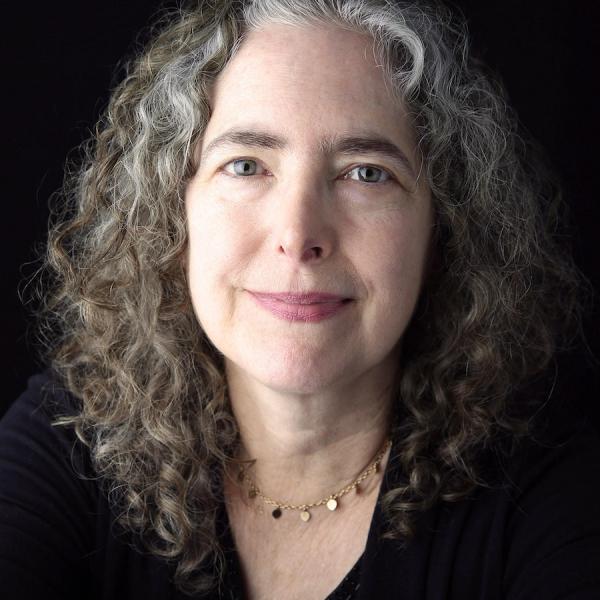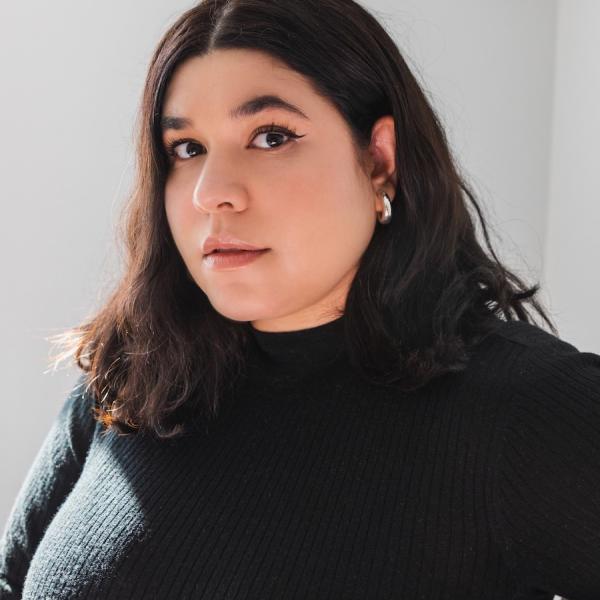Quick Study: July 20, 2023
Jo Reed: Welcome to "Quick Study," the monthly podcast from the National Endowment for the Arts. This is where we'll share stats and stories to help us better understand the value of art in everyday life. Sunil Iyengar is the pilot of "Quick Study." He's the director of research and analysis here at the arts endowment. Hello, Sunil.
Sunil Iyengar: Hi, Jo. Good to be here.
Jo Reed: Always good to have you.
Sunil Iyengar: Thank you.
Jo Reed: What are we going to be talking about today?
Sunil Iyengar: Yeah, well, today I'd like to dig into a study grounded in qualitative research approaches. It's a community case study used to evaluate a specific arts program. It's also used quantitative data for sure, but the strength of this particular study is that since there was close collaboration between the researchers and the community members it yielded insights about what kinds of data are most meaningful for evaluating the program and how such data can be collected more effectively in the future, so in essence it offers lessons that can be adopted by arts practitioners trying to design a similar program or intervention and lessons for the researchers who are trying to evaluate such programs. The study was supported by an NEA research grant, and findings have just been published by Colorado State University researchers in the journal Frontiers of Psychology. The article's titled "Performing Arts as a Non-Pharmacological Intervention for People with Dementia and Care Partners."
Jo Reed: Okay. The title is a bit of a mouthful...
Sunil Iyengar: <laughs> Yeah, it is.
Jo Reed: ...but let's talk about the particular arts program itself, the one that's being evaluated here. What is it and where is it?
Sunil Iyengar: Thank you. So this is the B/C-Sharp-- I'll just call it "BC-Sharp"-- performing arts engagement program that took place in a community performing arts center offering music, dance and theatre. There were more than 200 participants in the study, which recruited older adults from community organizations such as senior centers, senior housing, places of worship and local nonprofits. The focus of the study was to see if BC-Sharp as a non-drug intervention could lead to improved changes in cognition among older adults who've presented with dementia, and because the program itself includes caregivers of people with dementia the study also wanted to see if BC-Sharp helped to improve caregivers' quality of life, so the study follows a line of previous research by other investigators looking at plausible benefits of community arts programs for people with dementia.
Jo Reed: So what did this one find, Sunil?
Sunil Iyengar: Or do you mind if I describe some of the methods used first?
Jo Reed: No. Go right ahead.
Sunil Iyengar: All right, good, because this may be useful to know. The performing arts program itself consisted of three parallel tracks. One was symphony music, one was dance, and one was theatre. The program was offered in the years leading right up until the pandemic broke out in the US. People with dementia were recruited along with their caregivers, who were mostly spouses, partners or children, and about a month before the programming season the people with dementia responded to a social survey about various demographic factors, their hobbies and interests, and their health and diagnosis of cognitive impairment and their medications. They also completed an assessment called RBANS, which looks at neuropsychological status through a battery of questions, so this is how one generally measures changes in cognitive decline. And both the people with dementia and their caregivers took a questionnaire rating quality of life, so they did this before each performing arts event. There was a social hour at the arts facility, and people with dementia took the RBANS assessment again because they'd already done it a month before the season, and then along with the caregivers they took a survey to evaluate mood, and they also had saliva collected. This was to measure something called telomere length, which has been held to be a reliable marker of healthy aging.
Jo Reed: I'm curious. Why the RBANS assessment before the arts event rather than after?
Sunil Iyengar: Yeah, well, as they say on TV, "Wait. There's more." After the performing arts events there was a social hour for participants again like they'd had at the beginning before this performing arts event, and again the RBANS test was used for people with dementia and another mood survey for these folks and their caregivers. Then about a week after the performance caregivers took part in a telephone survey, and then finally a month after the performance season ended people with dementia and their caregivers took a quality-of-life questionnaire one more time, and those with dementia did the RBANS test again and retook the social survey. And not only that, but some participants were asked to wear Fitbit trackers so researchers could monitor heart rate, physical activity and sleep patterns before, during and after attending the performance.
Jo Reed: Those are a lot of measures. What did they find?
Sunil Iyengar: Yeah, I wanted you to know how many measures were in this thing and then to go into the findings. So the reason I dwelled so long on the research methods is some of the most interesting lessons from this case study were about the data collection techniques, which ones worked effectively in understanding this group and which did not. So, for example, if you take a look at the cognitive test scores, RBAN scores, there really weren't statistically significant findings, which may be a little disappointing, but on the other hand the researchers acknowledged that participants expressed impatience and fatigue with the length of the RBANS test. The patients or the people sometimes arrived late for the pre-performance assessment, which added to the rate of incompletes. As for the Fitbits I mentioned, for the purpose of the study too many participants found them, quote, "distracting or annoying and difficult for the caregivers to keep track of, both for themselves and for the people they were caring for," so this measure of activity movement tracking was abandoned. So that's pretty much it for the quantitative data. This leaves a host of other measures, which I ran through earlier. According to the authors, the qualitative data really revealed that BC-Sharp improved mood, memory, social relationships and overall quality of life.
Jo Reed: Okay, that I'm very interested in. How so?
Sunil Iyengar: So according to an analysis of this qualitative data, that is, results from interviews and direct observations, participants, quote, "described how BC-Sharp created a fun, safe space to have an evening out without emphasizing the role of dementia in their lives," unquote. Researchers characterized what they called a joyful atmosphere during the social hour, with participants smiling and joking. Also throughout the performances themselves people with dementia were observed watching the performers closely, clapping and singing along, looking to other audience members to gauge their reactions and commenting on the performance in general, so this is all qualitative data obviously. The people with dementia also recalled the event afterward and talked about the fun they had, so that was really nice.
Jo Reed: And what about the caregivers? What impact did the event have on them and their relationship with the people with dementia?
Sunil Iyengar: Yeah, again this was observed through qualitative data. Especially among caregivers, Jo, the feeling was that they were more connected with their partners than before. It was kind of like data night according to participants, and it helped the caregivers feel less isolated and more connected not only to the person they were caring for but also to the community at large. So in general mood, memory and social engagement, these benefits applied to each of the different types of performing arts attendance, symphony, dance and theatre, that is, the differences were pretty much the same. I mean, there were hardly any differences rather in their response to those outcomes, but apart from all this qualitative data from the researchers told them a lot about how, in the researchers' words, architecture plays a role in psychosocial programming for people with dementia. For example, the researchers learned about successes and challenges with the configuration of physical space in the performing arts center and how that affected the experiences of study participants.
Jo Reed: It sounds like there are a lot of lessons for the performing arts center and for the program managers, but you also mentioned that there were lessons for researchers as well.
Sunil Iyengar: Yeah, thanks. I'm glad you were listening. That's why I wanted to bring up the study today. Often we spend a lot of time talking about research results, but in this case-- and this is really a case study-- many of the takeaways have to do with process. You heard about the staggering array of data collection methods this team used, which reminds us how much work and research goes into right-sizing measures to the program and our intervention to make sure they're feasible and likely to work to generate meaningful outcomes. So BC-Sharp was a complex program, and in this particular study it was crucial to involve the caregivers in true collaboration. For example, the researchers declared that caregivers helped them understand which measures felt too, quote, "medical" and, quote, "which ones detracted from the BC-Sharp experience." For future studies of these types of community arts programs the researchers advocate including caregivers as valued participants and co-designers. So this is really of a piece with the NEA's own research and agenda lately in our grant application guidelines too, where we encourage community-based participatory research, that is, directly involving community members or populations being studied in the research design, implementation and reporting process.
Jo Reed: So the hope here is that we'll see more of these true collaborations in research design.
Sunil Iyengar: That's exactly right, and of course, this dovetails with a lot of the agency's current thinking and our goal around equity as well too, making sure we're equitably accounting for different voices in the conception of these research projects.
Jo Reed: Okay, Sunil, and we're all looking forward to seeing what's next. Thank you.
Sunil Iyengar: Thanks, Jo.
Jo Reed: That was Sunil Iyengar. He's the director of research and analysis here at the National Endowment for the Arts. You've been listening to "Quick Study." The music is "We Are One" from Scott Holmes Music. It's licensed through Creative Commons. Until next month, I'm Josephine Reed. Thanks for listening.
In this episode of Quick Study, we examine a case study about a community performing arts program for people with dementia and their caregivers.




